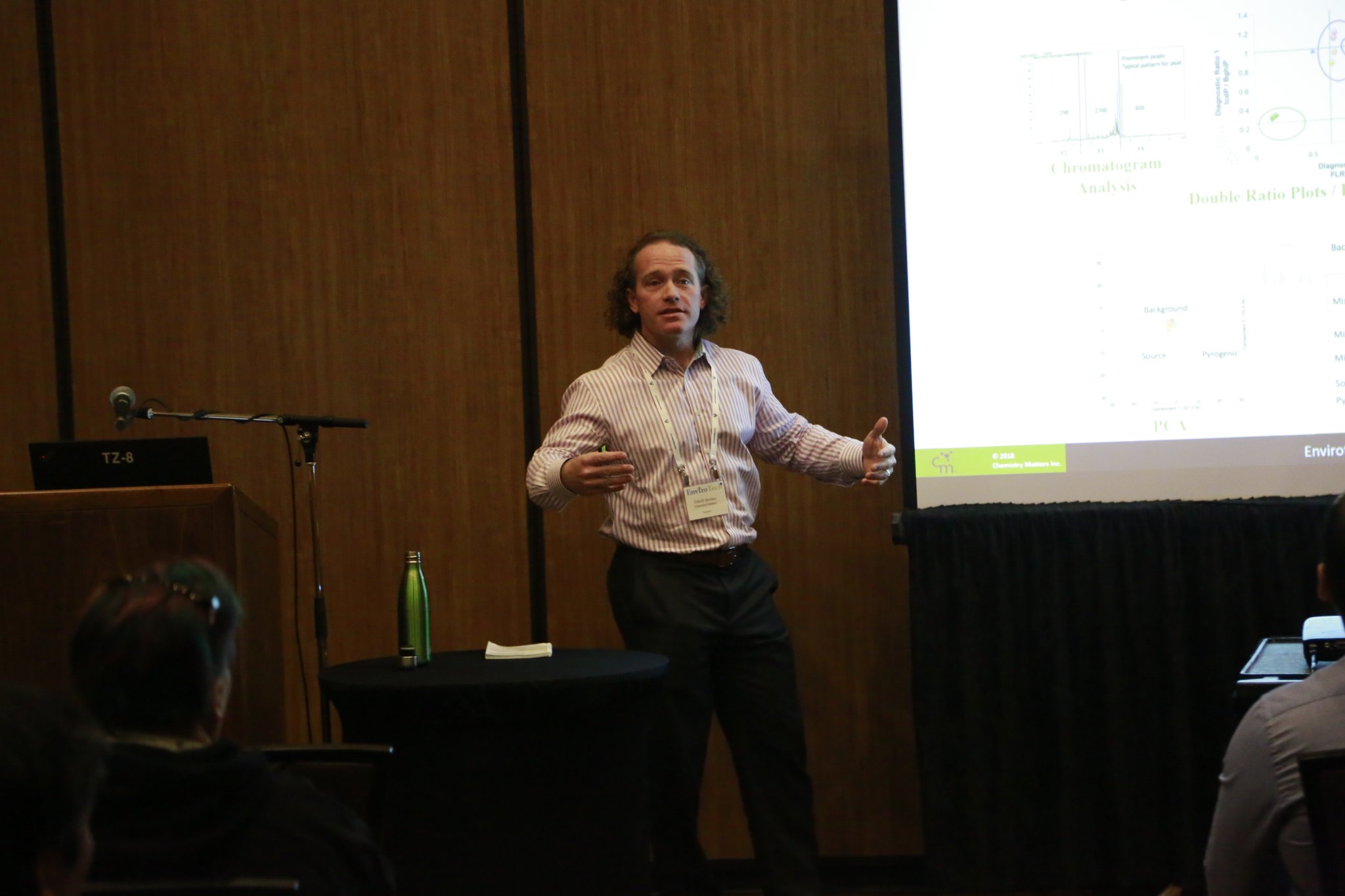
Dr. Court Sandau to present at OMECC
- Date: May 4, 2018
- Location: Auditorium, 125 Resources Rd. Toronto, Ontario
The Ontario Ministry of the Environment and Climate Change (OMECC) will host Dr. Court Sandau for a Guest Seminar on Environmental Forensics titled Unscrambling Contaminant Mixtures to Determine their Chemical Fingerprints – PAH Case Study. Dr. Sandau has worked with many of the scientists located at this facility, who do exceptional work on trace contaminant analysis using the very cutting edge analytical equipment available. The seminar will cover the development and use of positive matrix factorization app (and other multivariate statistics) for source apportionment of PAHs.
The Guest Seminar will be held:
Friday May 4, 2018
10:00 – 11:30 a.m.
Auditorium, 125 Resources Rd. Toronto
Remote access will be available via Adobe Connect and teleconference line
Video: Adobe Connect URL https://moecc.adobeconnect.com/sandau/
Audio: (416) 212-8014 or toll-free 1 (866) 500-5845
Conference ID: 7825504#
Abstract:
Many contaminated sites or science investigations have mixed plumes or contaminants of concern from multiple potential sources. Examples of mixed plumes could include mixed free phase petroleum plumes (e.g. condensate) or polycyclic aromatic hydrocarbons (PAHs) from crude oil spills mixing with upstream or local anthropogenic sources (storm water runoff) of PAHs in sediments. Air monitoring studies or water contaminant studies generally have multiple contaminant inputs that need to be identified and sources need to be quantified.
There are several advanced statistical techniques that can be used to determine the number and different sources of contaminants present on the site. In addition, these statistical tools can also apportion the amount of contaminants in each sample, thereby allowing liability to be distributed according the chemistry of the contaminants and those responsible for the release. Apportionment is important for litigious cases as it allows the calculation of who should pay for what portion of the cleanup. Apportionment is also important to identify current sources or dominant sources of contaminants so the release can be potentially mitigated.
Tools using non-negative matrix factorization (NMF) have been developed by US EPA and have been applied to the assessment of source apportionment in a variety of studies. The technique continues to grow in popularity and usage in the literature and applied in litigation proceedings. These techniques can be applied to many different chemical mixtures in a variety of environmental matrices.
We have successfully applied the technique to PAHs from sediment data to allocate the source of the PAHs in the sediments to sources identified by the models. Unfortunately, these models are not definitive and provide multiple conclusions depending on their starting point which can make interpretation difficult and sometimes questionable, especially for litigation proceedings.
This presentation will provide a summary of statistical tools used for chemical fingerprinting as well as the use of NMF and Bayesian modelling in order to provide some guidance on model usage for contaminant apportionment. The models need to be applied conservatively and require chemistry interpretation to elucidate what end members have been identified by the model and if those end members make sense. The models will be applied to a real case study scenarios to demonstrate their application.
About the Speaker:
Court Sandau is an avid fishermen, hunter and golfer in his spare time as well as a father of four and multiple business owner. He enjoys combining science with his entrepreneurial spirit, owning both an environmental and niche chemistry consulting company, Chemistry Matters Inc. (founded in 2011) and an environmental data visualization company, Statvis Analytics Inc. (founded in 2018).
He holds a PhD in Chemistry from Carleton University and is a registered professional chemist with the ACPA (Association of the Chemical Profession of Alberta). Court has worked in the environmental industry in Canada since 2004. Prior to 2004, Court worked at the Centers for Disease Control and Prevention (CDC) in Atlanta.
He utilizes advanced data analysis, visualization, and compound identification to comb through large data sets identifying patterns, causes, and origins in litigious chemistry issues. Court’s technical expertise includes analytical and environmental forensic chemistry, toxicology, and risk assessment.

 Provides expert support to projects involving litigious or contentious subjects. These expert witness services are founded on chemistry principles and proper application of scientific methods.
Provides expert support to projects involving litigious or contentious subjects. These expert witness services are founded on chemistry principles and proper application of scientific methods.